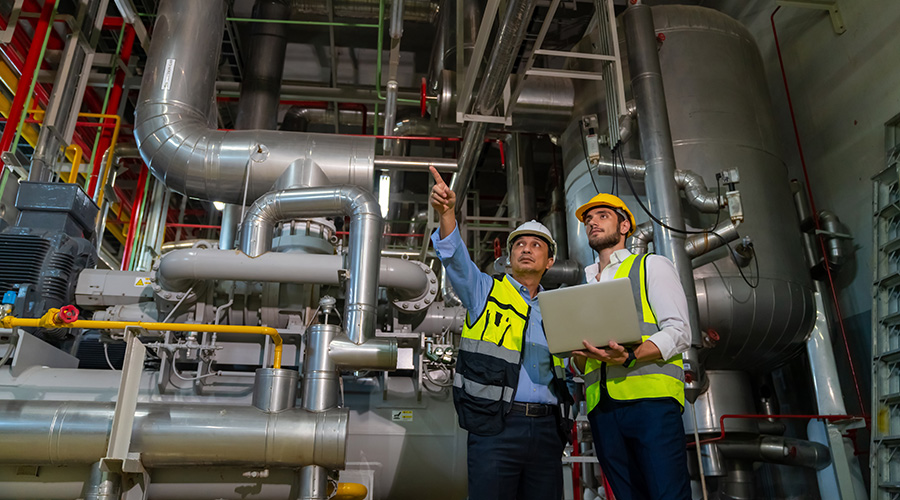MODE Architectural recently deployed Martin by HARMAN LED fixtures and video processors to create a unique and highly interactive lighting installation in the atrium of the Nine Two Nine Office Tower in Bellevue, Washington. The piece is composed of intersecting LED strips that light up and create patterns in response to real-time traffic and weather data, as well as physical movement within the atrium itself. Designers Bob Bonniol and Pablo Molina selected Martin products for their exceptional reliability, efficiency and world-class technical support.
“The atrium functions as a meeting place for people, with a lot of intersecting and crossing lines,” said Bonniol. “If you look at the navigation charts for airplanes or ships, you’ll see lots of ‘ley lines’, which are the lines of travel between waypoints. Places where ley lines intersect tend to be very powerful places, like Chicago or Hong Kong. I wanted to create an installation for the atrium that could reflect that idea, and I instantly began to think about using Martin’s creative LED products to create intersecting lines of pixels on the wall. We thought it would be a very exciting and interesting piece to look at.”
MODE created the piece using custom configurations of several Martin LED products, including dozens of VC-Strip LED video strips cut to custom lengths, a P3 PowerPort 1500 power and data processor with custom coding, and a P3-200 System Controller that enables DVI and SDI signals to be mapped onto the VC-Strips. Lighting systems integrator 4Wall Entertainment collaborated with Martin to manufacture custom extrusions to house the video strips, as well as a custom frosted front filter that makes the light softer and more expressive.
The piece is a permanent installation and is designed to operate continuously for a minimum of 10 years, so reliability was key. The building was also constructed using stringent green environmental standards, so the piece needed to be incredibly energy efficient to maintain its LEED gold building certification.
“Over the years, we’ve specified the full range of Martin LED products and we’ve gotten the same level of performance and reliability for everything we’ve used,” said Bonniol. “We also knew that using Martin products would enable us to be incredibly energy efficient and contribute to the building’s green methodology. We had to create a system that is entirely robust and in no way prone to failure. The piece will be in the atrium for a minimum of 10 years, and likely much longer than that.”
The sculpture uses the sensing system from Google’s autonomous cars to track people and objects moving through the atrium. The sensing system inputs data to a bespoke system that was created by MODE, which then feeds accurately mapped content to the Martin processor. The system also collects traffic data from the Department of Transportation and weather data from the National Weather Surface. The content on the video strips moves faster when traffic is heavy, and changes direction depending on the wind.
“The video processor had to implement all of these different sources and deliver them to the fixtures, but it wasn’t built to deal with the unusual arrangement of LEDs and the special content input,” said Bonniol. “We had to work with the Martin research and development team to update the software so it could map this very strange array of pixels and make the inputs interactive. We also needed to make sure it could withstand a blackout or power failure, and be easily repairable if there is a problem. The Martin team was able to configure and code the system to do everything we needed it to do. It’s been utterly reliable and rock solid.”
Implementing such an ambitious and innovative design required close collaboration between MODE Architectural and the HARMAN Professional solutions team, who travelled to the site to help with coding and programming the system.
“When people call us for a project, it’s usually to create something that’s never been done before,” said Bonniol. “I can buy an LED product from 100 different companies, but that’s not what I need. I need an ongoing relationship with a company that I trust 100% to stand behind their products and help me as a designer do things with the products that have never been done before. I knew if I specified Martin products, I would get the support of Martin and the products would be incredibly well manufactured and ready to operate. And if there were any issues, Martin would be ready to respond and make it right immediately. I was specifying a level of trust in Martin, and they were with us every step of the way to make sure it was right.”







